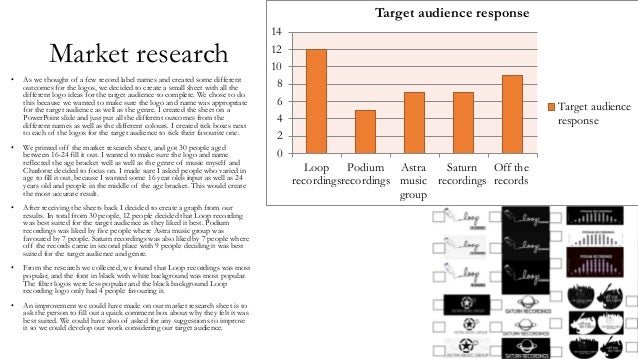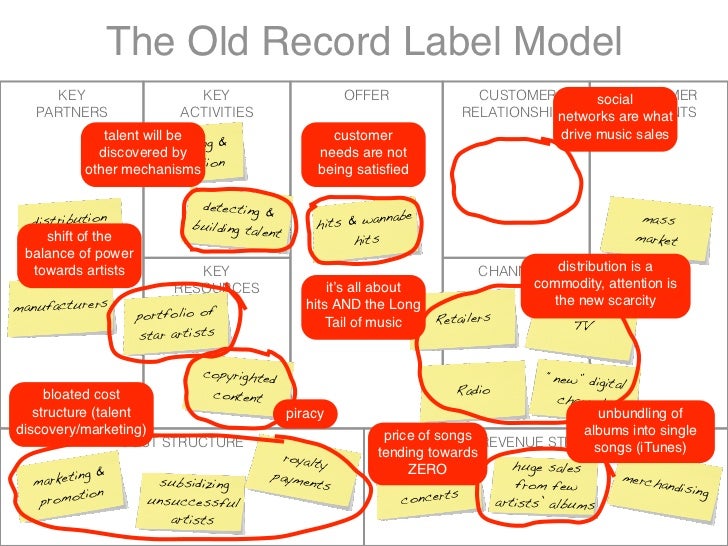45 by 1960 the major recording labels were marketing
6.4 Current Popular Trends in the Music Industry The Influence of Major Record Labels. During the 1990s, the record industry was booming. Music lovers were busy replacing their cassette tapes and vinyl records with CDs, and sales were high. In 1999, the total revenue from music sales and licensing peaked at $14.6 billion (Goldman, 2010). en.wikipedia.org › wiki › Victor_Talking_Machine_CompanyVictor Talking Machine Company - Wikipedia In the company's early years, Victor issued recordings on the Victor, Monarch and De Luxe labels, with the Victor label on 7-inch records, Monarch on 10-inch records and De Luxe on 12-inch records. De Luxe Special 14-inch records were briefly marketed in 1903–1904. In 1905, all labels and sizes were consolidated into the Victor imprint.
MUSC131 Flashcards - Quizlet By 1960, the major recording labels were marketing: Maturing audiences. ... In the 1960s, this group, more than any other music group, made rock the dominant pop music format that transcended age and demographic: The Beatles. The last album recorded by the Beatles was: abbey road.

By 1960 the major recording labels were marketing
How did record labels in the 60's find musicians? - Cosound Record labels have a responsibility to find musicians to manage and represent. This is something which has changed dramatically through the years due to the growth of the internet. Join us and take a stroll down memory lane to explore the methods record labels in the 60's used to take to find the next musicial icons. The 60's Music Industry History 1960s - Playlist Research - By the end of the 1960s the top major labels were CBS, Warner Brothers, RCA Victor, Capitol-EMI, PolyGram and MCA. The most successful independent label of the decade was Tamla/Motown. Herb Alpert was another successful independent owner who started A&M Records with Jerry Moss in 1962. MCA became a big player in the sixties by purchasing Decca. EOF
By 1960 the major recording labels were marketing. The Independent Record Labels of the 1950's and 1960's Eric Eller. Throughout the 1950's and 1960's, a wave of new musical movements by independent record labels and new artists emerged in the United States. This movement is captured in the stories of those label creators and owners, and in the turbulent journey through their successes and failures. The first emergence was fueled by multiple ... The Major Labels - Everything You Need To Know About Major Record Labels Warner Music Group has been through many highs and lows in its history as major corporations have owned the company over the years. Warner Music Group retains a 16% market share of the music industry with revenues of over $4.4 Billion dollars. Some well-known artists under this label include: The Doors, Pink Floyd, Led Zeppelin, Madonna, Wilco ... veux-veux-pas.fr › en › classified-adsAll classifieds - Veux-Veux-Pas, free classified ads Website W.E. rental price €70 per night. GPS coordinates of the accommodation Latitude 43°8'25"N BANDOL, T2 of 36 m2 for 3 people max, in a villa with garden and swimming pool to be shared with the owners, 5 mins from the coastal path. Top 10 major Record Labels - Medium 5. Promote. 6. Enforce. Now, you may have heard about the names of a couple of record labels while watching television or surfing the internet. Let us help you get more details about the same and ...
en.wikipedia.org › wiki › Modern_Sounds_in_CountryModern Sounds in Country and Western Music - Wikipedia The album and its lead single, "I Can't Stop Loving You", were both certified gold by the Recording Industry Association of America in 1962, as each record had sold at least 500,000 copies in the United States. The album's integration of soul and country challenged racial barriers in popular music at the height of the Civil Rights Movement. In ... The Independent Record Labels of the 1950's and 1960's - Term Paper Eric Eller. Throughout the 1950's and 1960's, a wave of new musical movements by independent record labels and new artists emerged in the United States. This movement is captured in the stories of those label creators and owners, and in the turbulent journey through their successes and failures. The first emergence was fueled by multiple ... Major Pop Record Labels: The Big Three - LiveAbout The major labels today are all three media conglomerates that operate a number of specific label imprints, or the actual company logo stamped on the recording. Consolidations brought the number of major labels down from six in 1999 to three today. Major labels account for about 70 percent of music sales by recent estimates. 01 of 03 Category:Record labels established in 1960 - Wikipedia Categories: Record labels established in the 1960s. Entertainment companies established in 1960. Mass media companies established in 1960. 1960 in music. Record labels by year of establishment. Hidden categories: Navseasoncats year and decade.
Independent record label - Wikipedia An independent record label (or indie label) is a record label that operates without the funding or distribution of major record labels; they are a type of small- to medium-sized enterprise, or SME.The labels and artists are often represented by trade associations in their country or region, which in turn are represented by the international trade body, the Worldwide Independent Network (WIN). Record Labels 1960 - Deacon Street "Theme From a Summer Place" was the universally recognized top record of 1960 and was the main reason for Columbia's claiming the number two spot in label popularity. "Everybody's Somebody's Fool" was Connie Francis's first number one for MGM -- she would have her second later in the year with "My Heart Has A Mind Of Its Own." The Rise and Fall of Record Labels - Claremont Colleges Many more record labels entered the scene in the 1950s but eventually the record labels began to merge and consolidate to form a few corporate giants. The 1960s were a decade of consolidation in the recorded music industry. Due to economies of scale and the large-scale distribution needed to truly commercialize the en.wikipedia.org › wiki › Titanic:_Music_from_theTitanic: Music from the Motion Picture - Wikipedia Other artists were invited to submit songs for the movie including contemporary Christian artist Michael W. Smith. He mentions in the liner notes to the song "In My Arms Again" from his 1998 album Live the Life ; [8] "Inspired and written for the movie Titanic , grateful for the opportunity to send them a song; grateful it landed on this record."
American Popular Music Flashcards - Quizlet The specific pop music scene that was developed on the West Coast during the early 1960s was: Surf. By 1960, the major recording labels were marketing: less vulgar product to a maturing audience. The most prolific pop composer of the last half of the 20th century has been: Burt Bacharach.
The Independent Record Labels of the 1950's and 1960's Originally, Independent music referred to bands or artists who performed and/or produced music autonomously and without the commercial rules and restrictions associated with major record labels (Hale, 2014). Throughout the years Independent music has evolved into a broader meaning (America Rocks, 2016). The 1950's.
The Independent Record Labels of the 1950's and 1960's Atlantic went on to become a "powerhouse" in the 1960's, signing such mainstream artists as Sonny and Cher. It was successful enough to also branch off into other sub-labels like Atco. From 1960-1968, Atlantic, spear-headed by Jerry Wexler, had a distribution deal with the Memphis record company that became Stax records (Jacobs).
en.wikipedia.org › wiki › Capitol_RecordsCapitol Records - Wikipedia Capitol was the first major west coast label to compete with major labels on the east coast such as RCA Victor, Columbia, and Decca. In addition to its Los Angeles recording studios, Capitol owned a second studio in New York City and occasionally sent mobile recording equipment to other cities. Other genres
Record collectors: Hollywood record labels in the 1950s and 1960s. In short, by surveying contemporary trade magazine reportage, it outlines Hollywood's intervention into the recording industry in the 1950s. It also argues that by the mid-1960s, as the market for rock music expanded, corporate links between studios and record labels instructed Hollywood on how to successfully address the youth audience.
In the early 1960s, the major labels tried to regain the rock and roll ... In the early 1960s, the major labels tried to regain the rock and roll market by: Creating rock and roll-themed consumer products Creating new labels - 14980962 genrowland8206 genrowland8206 03/02/2020 History High School answered • expert verified
en.wikipedia.org › wiki › Stereophonic_soundStereophonic sound - Wikipedia Stereophonic sound or, more commonly, stereo, is a method of sound reproduction that recreates a multi-directional, 3-dimensional audible perspective.This is usually achieved by using two independent audio channels through a configuration of two loudspeakers (or stereo headphones) in such a way as to create the impression of sound heard from various directions, as in natural hearing.
recorder.butlercountyohio.org › search_records › subdivisionWelcome to Butler County Recorders Office Copy and paste this code into your website. Your Link Name
EOF
Music Industry History 1960s - Playlist Research - By the end of the 1960s the top major labels were CBS, Warner Brothers, RCA Victor, Capitol-EMI, PolyGram and MCA. The most successful independent label of the decade was Tamla/Motown. Herb Alpert was another successful independent owner who started A&M Records with Jerry Moss in 1962. MCA became a big player in the sixties by purchasing Decca.





Post a Comment for "45 by 1960 the major recording labels were marketing"